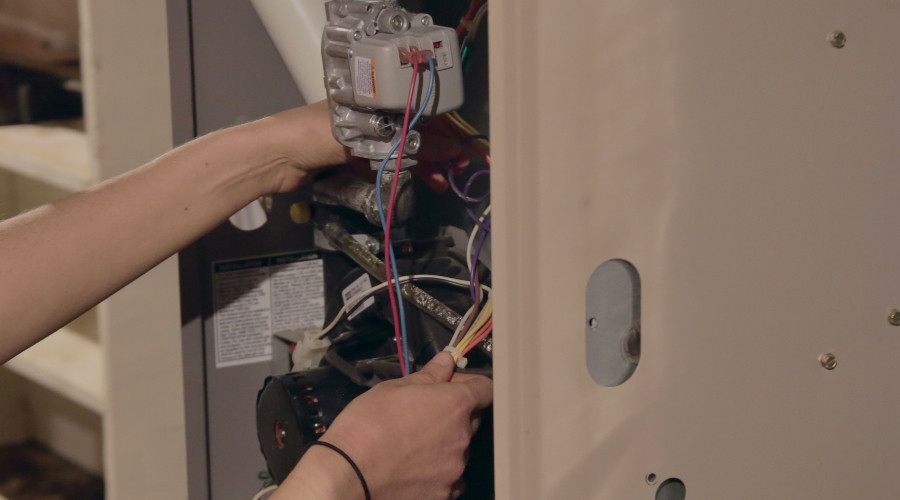When to Replace a Heater and Possible Alternatives
When a heater begins to struggle, deciding between another repair and full heater replacement can be challenging. Aging equipment, rising energy costs, and uneven comfort often signal that it is time to consider new options. This post explains when heating system replacement may be necessary and reviews two primary alternatives—furnace installation and heat pump installation—to help match a new system to a home’s needs.
Signs Heater Replacement Is Needed
 Most heating systems do not fail overnight; they gradually show signs that performance is slipping. Old age is one of the clearest indicators. As a heater approaches the end of its expected lifespan, parts wear out, efficiency declines, and maintaining comfort becomes harder. When an older unit requires frequent repairs, especially to major components, heating system replacement can be more cost-effective than continued patchwork fixes.
Most heating systems do not fail overnight; they gradually show signs that performance is slipping. Old age is one of the clearest indicators. As a heater approaches the end of its expected lifespan, parts wear out, efficiency declines, and maintaining comfort becomes harder. When an older unit requires frequent repairs, especially to major components, heating system replacement can be more cost-effective than continued patchwork fixes.
Higher utility costs are another red flag. If heating bills climb from one season to the next while usage habits remain similar, the heater may be working harder than before to deliver the same level of warmth. Internal wear, outdated technology, and declining efficiency can all contribute to this trend and suggest that heater replacement should be on the table.
Insufficient or inconsistent heating rounds out the list of common warning signs. Rooms that never quite reach the thermostat setting, frequent cold spots, or a system that runs almost nonstop without keeping the space comfortable all point to a heater that is no longer performing as designed. At this stage, investigating options such as furnace replacement or heat pump replacement can restore dependable, even comfort.
Furnace Installation
A furnace is a central heating appliance that creates heat—usually by burning fuel or using electric resistance—and distributes warm air through ductwork. Furnaces are widely used for whole-home heating and are known for strong, steady heat output. With proper care, many furnaces provide long service lives, typically 15–30 years, which is generally longer than the typical life expectancy quoted for many heat pump systems.
One of the major benefits of furnace installation is the delivery of hotter supply air compared to many heat pumps. This higher-temperature air can feel especially comfortable during colder weather and helps interior spaces warm up quickly after the system turns on. In regions that experience chilly winters, this strong heat output can be a significant advantage.
Modern furnace replacement can also improve efficiency, safety, and noise levels compared to older units. Updated designs often feature better controls, more effective blowers, and improved venting. For homes that already have ductwork and access to a suitable fuel source, furnace installation usually integrates smoothly with existing infrastructure while providing a familiar form of reliable heat.
Heat Pump Installation
 A heat pump operates differently from a furnace. Instead of generating heat, it moves heat from one place to another. In heating mode, a heat pump extracts heat from the outdoor air (or ground, depending on system type) and transfers it indoors. In cooling mode, it reverses the process, functioning like an air conditioner. This dual-purpose design means that one piece of equipment can handle both heating and cooling needs.
A heat pump operates differently from a furnace. Instead of generating heat, it moves heat from one place to another. In heating mode, a heat pump extracts heat from the outdoor air (or ground, depending on system type) and transfers it indoors. In cooling mode, it reverses the process, functioning like an air conditioner. This dual-purpose design means that one piece of equipment can handle both heating and cooling needs.
The ability to serve as a combined heating and cooling system is one of the standout benefits of heat pump installation. Rather than maintaining separate furnaces and air conditioners, a single heat pump can provide year-round comfort. This can simplify maintenance, free up space, and streamline equipment selection for new or updated homes.
Heat pumps are also known for efficient operation under many conditions. Because they move heat instead of creating it through combustion or electric resistance, they typically use less energy to maintain comfortable temperatures, which can lead to lower energy bills over time. Many systems operate with longer, gentler cycles, helping keep indoor temperatures stable without the larger swings sometimes associated with older furnaces. For households interested in highly efficient, all-electric comfort, heat pump replacement or first-time heat pump installation can be an attractive alternative.
Ultimately, the best choice between furnace installation and heat pump installation depends on climate, energy costs, existing equipment, and comfort preferences. Evaluating age, repair history, and performance helps determine when a heating system replacement is due and which type of system offers the best combination of reliability and efficiency.
About Barker Heating & Cooling
Barker Heating & Cooling has been providing top-rated same-day and emergency HVAC services to Alameda & Contra Costa Counties since 1998. They provide on-time services, technician expertise, and a lifetime craftsmanship warranty. Call them today for upfront, flat-rate pricing on heater replacements in Livermore, CA & the Tri-Valley.



